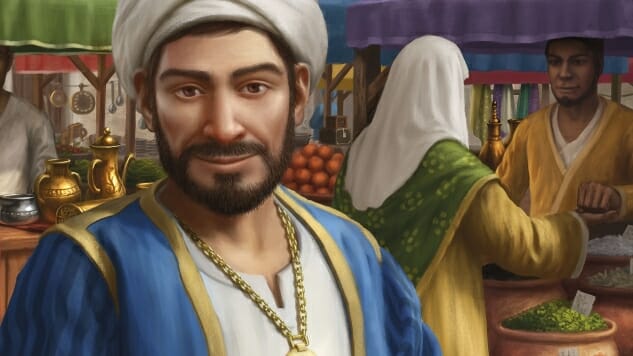Istanbul: The Dice Game Can’t Stack Up to the Original

Istanbul won the Kennerspiel des Jahres in 2014 and was one of my favorite games that year, coming in just behind Splendor, as a smart yet fast-moving game that combined worker placement and set collection mechanics with a novel pathfinding aspect that particularly rewarded players who could plan ahead and see non-obvious ways to make their moves more efficient. The base game includes sixteen place tiles that can be arranged in numerous ways to form a 4×4 board, so that the paths required to score can vary in each game. There are two regular expansions that can make the board larger and the game longer by adding resources or other ways to obtain rubies, of which a player must be the first to get a certain number to win the game.
Since one of the big rages in board game publishing is to extend popular brands via dice and/or card game versions, it’s not a surprise to see Istanbul get this treatment with the new Istanbul: The Dice Game (Das Würfelspiel, for purists), which retains most of the theme of the original game and some of its concepts, but completely does away with the most interesting part of the base game—the pathfinding. The result is a totally different game, one that’s fun but very light, more luck-driven, and doesn’t do enough to distinguish itself from other Euro games with a substantial amount of chance.
In Istanbul: The Dice Game, players are once again trying to obtain rubies, six for a 2-3 player game or five for a 4-player game, from a central board where the cost to get rubies from each source increases every time someone purchases or takes one. You can buy a ruby with coins (lira); with a set of at least four goods of one color; with a set of four goods, one of each color, and an increasing number of additional goods; or by buying five mosque tiles (four in a four-player game) from the supply. There are four standard goods plus brown goods that function as wilds and can be used to substitute for any color.
-

-

-

-

-

-

-

-

-

-

-

-

-

-

-

-

-

-

-

-

-

-

-

-

-

-

-

-

-

-

-

-

-

-

-

-

-

-

-

-









































